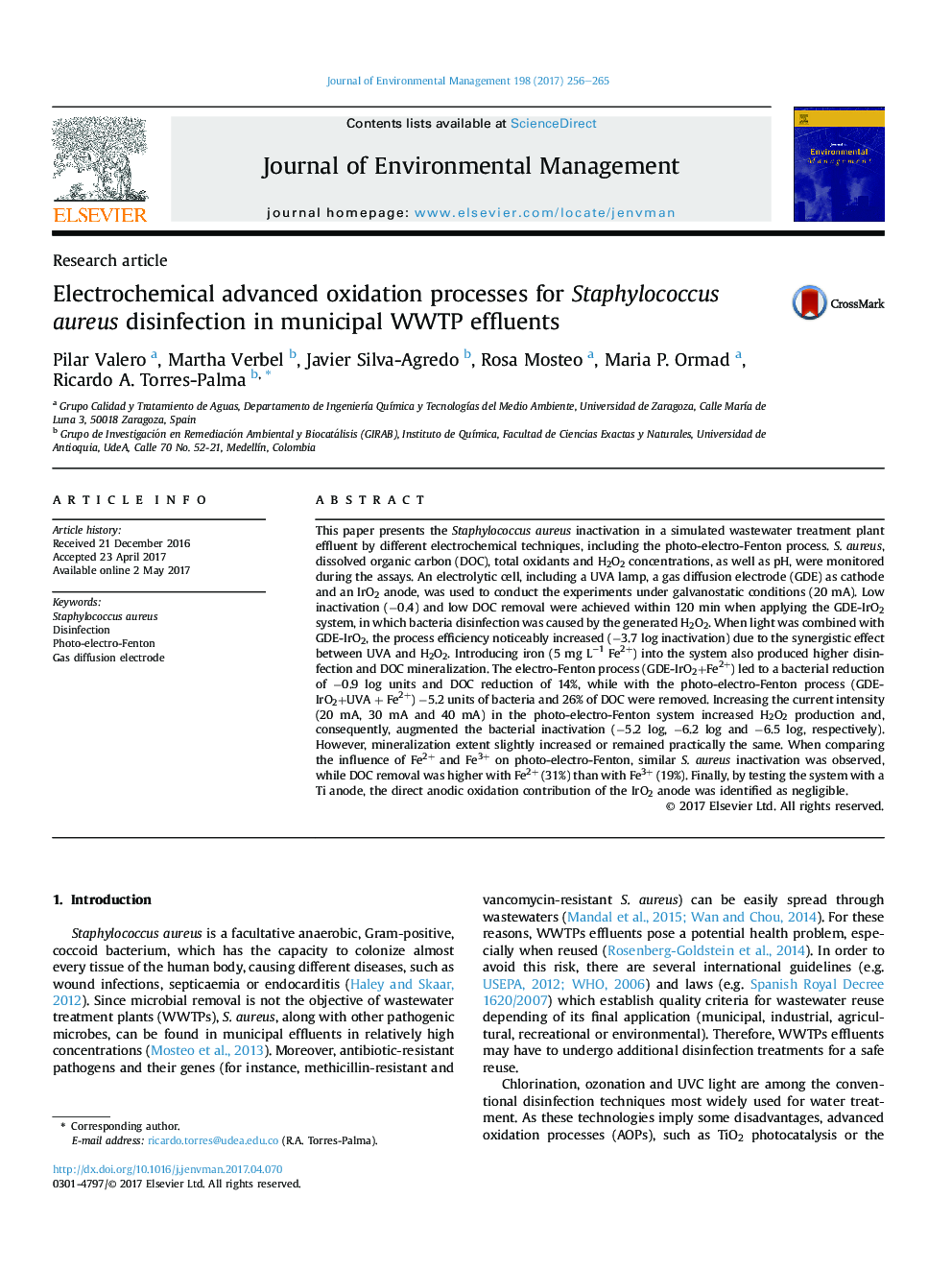| Article ID | Journal | Published Year | Pages | File Type |
|---|---|---|---|---|
| 5116750 | Journal of Environmental Management | 2017 | 10 Pages |
â¢S. aureus inactivation by electrochemical advanced oxidation processes was studied.â¢UVA light greatly enhanced disinfection and mineralization in the studied treatments.â¢Total bacterial inactivation was achieved by the photo-electro-Fenton (PEF) system.â¢Influence of current intensity, iron type and anode type on PEF was evaluated.â¢0.56 kWh mâ3 achieved 5 log units of disinfection in the WWTP effluent by PEF.
This paper presents the Staphylococcus aureus inactivation in a simulated wastewater treatment plant effluent by different electrochemical techniques, including the photo-electro-Fenton process. S. aureus, dissolved organic carbon (DOC), total oxidants and H2O2 concentrations, as well as pH, were monitored during the assays. An electrolytic cell, including a UVA lamp, a gas diffusion electrode (GDE) as cathode and an IrO2 anode, was used to conduct the experiments under galvanostatic conditions (20 mA). Low inactivation (â0.4) and low DOC removal were achieved within 120 min when applying the GDE-IrO2 system, in which bacteria disinfection was caused by the generated H2O2. When light was combined with GDE-IrO2, the process efficiency noticeably increased (â3.7 log inactivation) due to the synergistic effect between UVA and H2O2. Introducing iron (5 mg Lâ1 Fe2+) into the system also produced higher disinfection and DOC mineralization. The electro-Fenton process (GDE-IrO2+Fe2+) led to a bacterial reduction of â0.9 log units and DOC reduction of 14%, while with the photo-electro-Fenton process (GDE-IrO2+UVA + Fe2+) â5.2 units of bacteria and 26% of DOC were removed. Increasing the current intensity (20 mA, 30 mA and 40 mA) in the photo-electro-Fenton system increased H2O2 production and, consequently, augmented the bacterial inactivation (â5.2 log, â6.2 log and â6.5 log, respectively). However, mineralization extent slightly increased or remained practically the same. When comparing the influence of Fe2+ and Fe3+ on photo-electro-Fenton, similar S. aureus inactivation was observed, while DOC removal was higher with Fe2+ (31%) than with Fe3+ (19%). Finally, by testing the system with a Ti anode, the direct anodic oxidation contribution of the IrO2 anode was identified as negligible.
Graphical abstractDownload high-res image (280KB)Download full-size image
